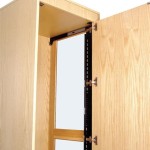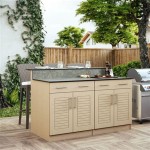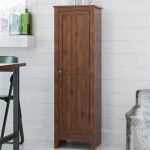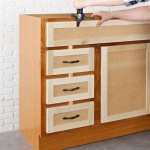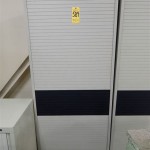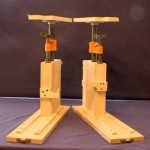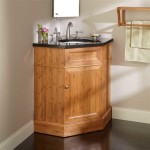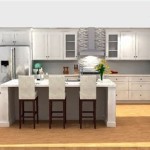Maximizing Cabinet Storage With Pivot Hinges For Doors
Cabinet storage is a perennial challenge in homes and businesses. Optimizing available space requires careful consideration of cabinet design, organization strategies, and the hardware utilized. One often-overlooked component that can significantly impact storage capacity and accessibility is the type of hinge used for cabinet doors. Pivot hinges, distinguished by their unique rotation mechanism, offer distinct advantages when it comes to maximizing storage, particularly in specific applications.
Traditional butt hinges, commonly found in many cabinets, attach along the edge of the door and allow it to swing outward in an arc. While simple and functional, this type of hinge can obstruct access to the cabinet interior, especially in narrow spaces or when dealing with adjacent cabinets. Pivot hinges, on the other hand, mount at the top and bottom of the door, allowing it to rotate around a central axis. This configuration can create unique storage possibilities and improve accessibility in certain situations.
The primary advantage of pivot hinges lies in their ability to allow doors to swing a full 180 degrees or even more, depending on the specific hinge design. This wide range of motion effectively eliminates the obstruction caused by a traditional hinge, providing complete and unobstructed access to the cabinet's contents. This is particularly beneficial in areas where space is at a premium or where frequent access to the cabinet is required.
Enhanced Accessibility and Visibility
One of the primary benefits of employing pivot hinges in cabinet design is the enhanced accessibility and visibility they provide. Unlike conventional hinges that restrict the door's swing, pivot hinges facilitate a nearly complete clearance of the cabinet opening when the door is fully rotated. This allows users to view and retrieve items from any part of the cabinet without reaching around an obstructing door.
This unrestricted access is especially valuable in kitchen cabinets, where items are frequently accessed and organized. Imagine a pantry cabinet equipped with pivot hinges. The user can fully open the door, providing a clear view of all shelves and their contents, allowing for efficient inventory management and streamlined retrieval of ingredients during meal preparation. Similarly, in a bathroom cabinet, pivot hinges can allow for easier access to toiletries and medications, promoting organization and reducing clutter.
Furthermore, the improved visibility offered by pivot hinges can be particularly advantageous for individuals with mobility limitations or visual impairments. The ability to fully expose the contents of the cabinet reduces the need for bending, reaching, or straining to see items in the back, thereby enhancing usability and safety. This makes pivot hinges a valuable consideration for creating accessible and inclusive spaces.
Space Optimization in Tight Areas
Pivot hinges can be particularly useful in optimizing storage in confined spaces, such as narrow hallways, small kitchens, or within custom-built furniture. In these scenarios, the standard swing of a butt-hinged door can significantly impede movement or block access to adjacent areas. Pivot hinges, with their rotational movement, can mitigate these issues by allowing the door to swing parallel to the cabinet, minimizing its encroachment into the surrounding space.
Consider a shallow cabinet installed in a narrow hallway. A conventional door would likely protrude into the walkway, potentially creating a tripping hazard or obstructing passage. By using pivot hinges, the door can swing flush against the side of the cabinet when open, preserving valuable floor space and maintaining a clear pathway. This application demonstrates the ability of pivot hinges to effectively manage space constraints and enhance the overall functionality of confined areas.
This space-saving feature is also applicable in custom-built furniture, where every inch counts. Whether it's a compact entertainment center, a built-in bookcase, or a small bar, pivot hinges can contribute to a more streamlined and efficient design by minimizing the door's footprint when open. This allows for more flexible placement of the furniture and optimizes the utilization of available space.
Unique Design Applications and Aesthetics
Beyond their functional advantages, pivot hinges can also contribute to the aesthetic appeal of cabinet design. Their streamlined and minimalist appearance can enhance the overall visual impression of a cabinet, particularly in contemporary or modern settings. The absence of visible hinges on the face of the cabinet creates a clean and uncluttered look, allowing the focus to remain on the design and materials.
Pivot hinges can also be used to create unique and innovative cabinet designs. For example, they can be incorporated into corner cabinets to allow for complete access to the interior, eliminating the awkward angles and unreachable spaces that are often associated with traditional corner cabinet designs. They can also be used to create rotating bookshelves or display cases, adding a dynamic and interactive element to a room.
Furthermore, pivot hinges can be used to achieve a seamless and concealed look. By recessing the hinges into the door and cabinet frame, it is possible to create a "hidden" door effect, where the door appears to be an integral part of the wall or furniture. This can be particularly effective in creating secret compartments, hidden storage spaces, or integrated design elements.
The selection of appropriate pivot hinges is crucial for ensuring optimal performance and longevity. The weight and size of the door are important factors to consider, as the hinges must be capable of supporting the load and withstanding frequent use. The material and finish of the hinges should also be chosen to complement the overall design and withstand the environmental conditions to which they will be exposed.
Installing pivot hinges requires precise measurements and careful execution. Unlike traditional butt hinges, which are relatively simple to install, pivot hinges require accurate alignment and secure mounting to ensure smooth and reliable operation. It is often recommended to consult with a professional cabinet maker or installer to ensure proper installation and avoid potential problems.
In conclusion, pivot hinges offer a range of benefits for maximizing cabinet storage and enhancing accessibility. Their ability to allow for full door rotation, optimize space in tight areas, and contribute to unique design applications makes them a valuable consideration for both residential and commercial settings. By carefully selecting and installing pivot hinges, it is possible to create more functional, efficient, and aesthetically pleasing storage solutions.

Maximize Storage And Accessibility Orange County Register

Wood Pantry Swingout

Maximizing Space And Functionality With Cabinet Hinges

Storage With Style Full Height Blind Corner Organizer

Pantry And Cabinet Organizers Create A More Efficient Kitchen Van Dyke S Rers

Maximize Storage And Accessibility Orange County Register

Storage With Style Metal No Wiggle Base Pullout Preassembled Soft Close Slides

Innovative Hinge And Slide Designs What S New In The World Of Furniture Hardware

Storage With Style Blind Corner

Knife Pivot Hinge Review The Hardware Hut
Related Posts

